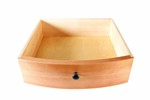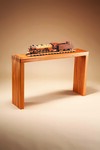We may receive a commission when you use our affiliate links. However, this does not impact our recommendations.
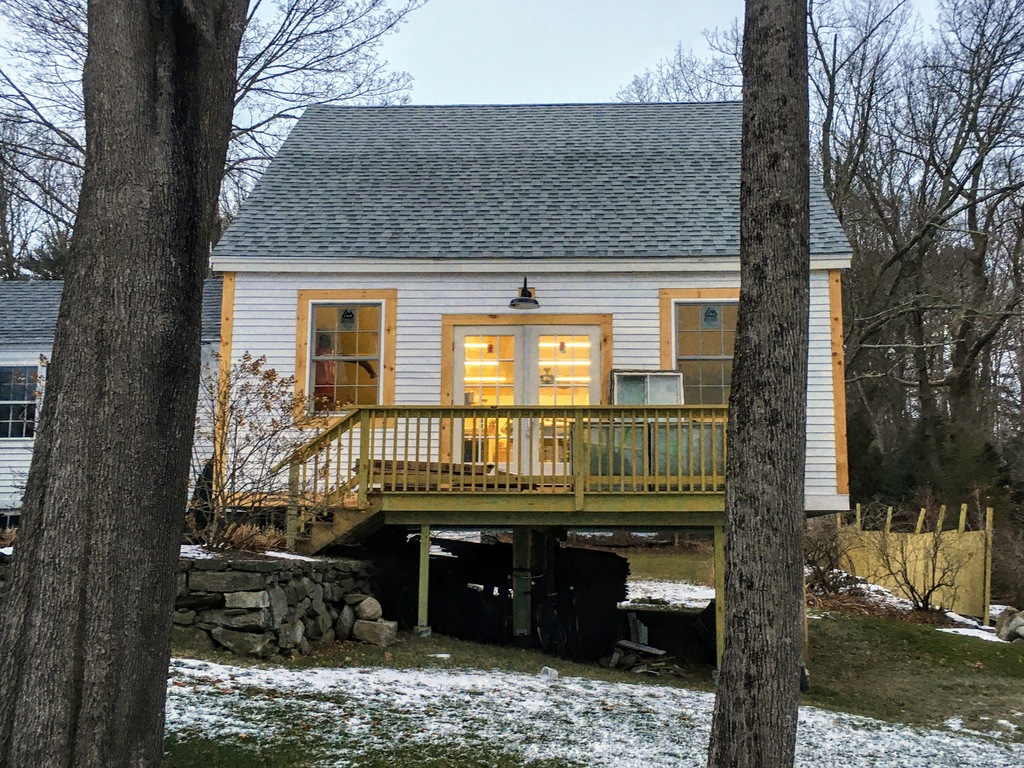
Soon to be filled with woodworkers.
William Brown is a lifelong woodworker who’s decided to channel his passion for the craft into a brand new woodworking school, Maine Coast Workshop. We interviewed him to learn more about the school, himself, and the future of woodworking.
Why are you starting this school? Why now?
I’ve been making high-end reproduction and historically inspired furniture for 40 years. After graduating from Haverford College (in PA) with majors in music & biology, I thought I wanted to get a doctorate in molecular biology. However, after 12 miserable months, I realized that I needed to work creatively with my hands. I had a very strong sense that I wanted to work with wood over any other media.
So I took off a few years, worked at my dad’s tree nursery hoeing fields and digging trees and worked on my brother’s landscape crew. At that time, in the early 1980’s. there was very little formal opportunity to learn woodworking on a hands-on level. There was almost nothing available in the way of classes. Having minimal funds, I wrote letters to furniture makers throughout the US enquiring about working as an apprentice. No one would take me.
However, I was very fortunate in convincing (“begging” is more accurate) a local Pennsylvania cabinetmaker, E. Townsend Moore, to let me into his shop. He had been a curator at Winterthur and had learned from a long line of Chester County period furniture makers. His mentor was Thomas Treate Hogg, a well known Chester County furniture maker in the 1940’s- 60’s. Even though I worked 60 hour weeks as a landscaper, I was at Moore’s shop every weekend. Because he saw the seriousness of my interest and he also did not have anyone to pass his skill on to, he really took me under his wing and gave me a lot of his time. In return, as I had no money to offer, I did a very thorough cleaning of his shop after every work session, which he was quite grateful for. Moore was an extremely generous and patient teacher and I was an eager student who learned fast. After about a year, I was pretty much able to look at any period furniture photo and make what I saw.
I considered becoming a cabinetmaker as a career, so I spent time interviewing furniture makers around Chester County. What I found was that many professionals were just not all that happy. Making a living as an artisan is very hard work and many of the folks were fixing broken chairs and repairing shabby Victorian dressers instead of doing what they loved. So while I was out hoeing the fields at work one day, I decided that I’d apply to medical school and gain a more secure career, while pursuing furniture making on the side any way I could. And that’s what I did.
To cut the story short, I’m an anesthesiologist and a passionate student of period furniture making. I just kept learning more about woodworking through the years and used every opportunity to gain more skills. I’ve acquired a full shop of third-hand tools slowly over 30 years. My passion for furniture making and carving has only increased in time.
That’s a long lead-in to your question- I’m starting classes because I feel that I’ve accomplished much of what I had hoped to as a maker. I’ve made everything from high-end baroque carved Philadelphia Chippendale pieces to Federal furniture incorporating elaborate hand-made inlay, bandings, and veneer. I’ve made over 50 Windsor chairs of every design, and even specialize with my current carving of Bellamy style eagles.

Can you imagine a more picturesque setting for a workshop?
I was ready to branch into a new woodworking adventure. The idea of starting a school has been lurking in my mind for many years. Woodworking for many folks is a rather isolated activity; we typically work alone in our basements and shops. I was excited about the prospect of getting a group of folks together, all sharing a similar passion and a desire to learn. So the social aspects are very appealing to me. I’ve found most woodworkers to be great people who are fun to be around, and we all have areas of expertise to share with others. So, after acquiring a place in the beautiful coastal Maine village of Camden, I figured that we now had the right location to make it happen. I’m currently expanding my little sun porch off the back of the home (where I have been carving) into a full-sized shop. We are located just a few blocks from the harbor. Camden is consistently voted ‘the prettiest village in Maine’ and the area is referred to as “The Jewel of the Maine Coast”, so it’s a just a wonderful place for folks to come for a woodworking retreat. My classes will span May through October, when the days are pleasant and warm and the evenings are cool.
When I started thinking about starting a school, I had to consider that there are a number of craft schools out there and the Maine coast happens to have a particularly high concentration. Would another school be viable? Fortunately, my areas of interest happen to provide a niche that dovetails and nicely complements the other surrounding schools. Peter Korn’s ‘Center For Furniture Craftsmanship’ is 15 minutes away. I’ve taken many classes there over the years and am a big supporter and admirer of his school. Their multi-acre campus focuses more on contemporary work and longer-term apprenticeships. The focus of Kenneth and Angela Kortemeier’s wonderful ‘Maine Coast Craft School’, an hour away in Bristol, ME, is primarily green woodworking and hand-tool only work. My ‘Maine Coast Traditional Arts Workshop’ will focus on classical high-end carving, 18th century Chippendale, Queen Anne, Federal, and 19th century Shaker projects and techniques. We’ll utilize a mix of hand and power tools when necessary. Indeed, there will be areas of overlap with these schools, but I think that we will all work together well to complement and strengthen each other. I continue to direct interested students to these fantastic schools when it best suits what they are looking for. Mid-coast Maine has become truly a unique mecca for woodworking education, covering the gamut of possibilities. In addition to being just a beautiful place for a family to visit, we now can offer every option for students wanting an opportunity to further their woodworking skills.
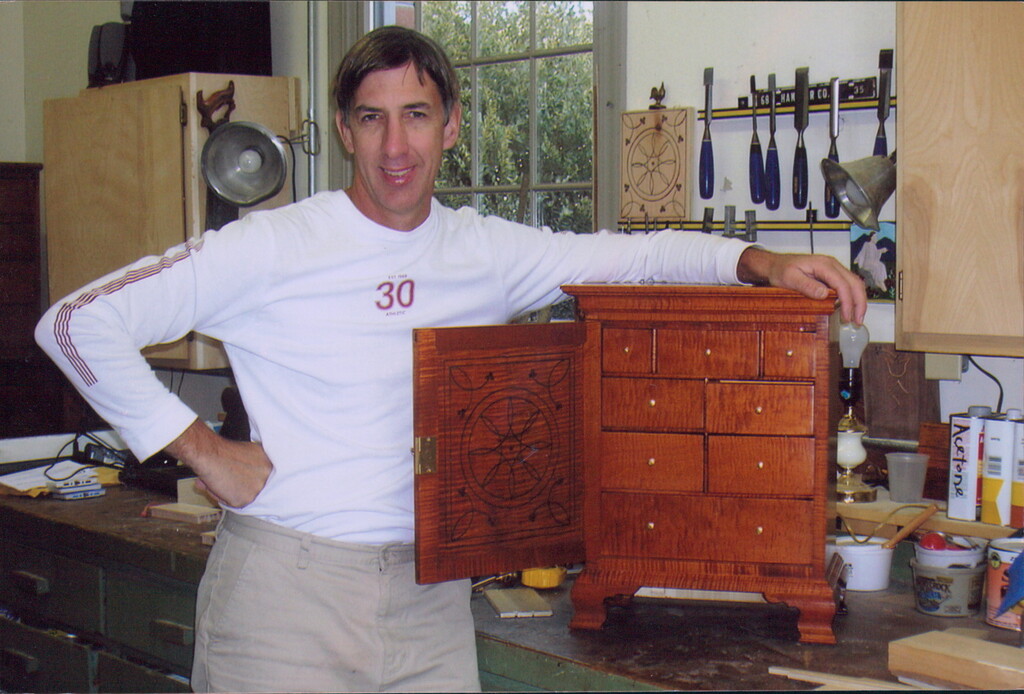
William Brown
What’s been the most difficult part?
Well, probably just the amount of time that I now spend on my computer, which I really do not enjoy. I’d rather be in the shop! There are so many aspects to making this school a reality. My sense of responsibility to students and teachers makes it all a bit scary at times.
Early on, I had to assess my chances of getting some good instructors. I sent about 20 inquiries out, to the very best makers and carvers that I knew. Having been immersed in woodworking for most of my life and having achieved status as an award-winning furniture maker and carver myself, I knew who was doing the finest quality work out there. I received a very interesting mix of replies from my letters, with comments ranging from “sounds interesting, but I think I’ll wait” (the most common) to the downright skeptical (one guy told me to give it up), to a few who were just downright excited and enthusiastic, saying “I’d love to come, sign me up!”. Oddly enough, almost all of my top choices, whose work I most respected, and who also were, crucially, some of the finest teachers, were the most excited about coming! Folks like Alf Sharp from TN, who’s won every award there is for his period work; Alexander Grabovetskiy, from Florida who’s been nominated as “best carver in the world”; Ray Journigan, SAPFM Cartouche winner and very well known as a master teacher (he’ll be teaching 3 classes); Graham Blackburn, author of over 25 books and a legendary hand-tool expert, and others of like caliber all replied with a strong show of enthusiasm and support.
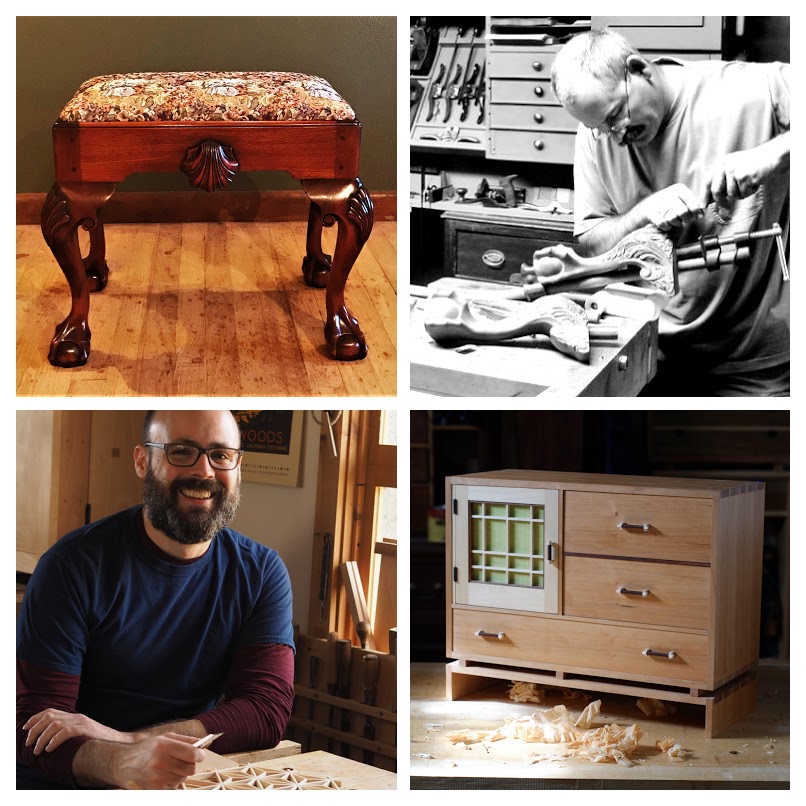
A small sample of the woodworkers and projects available at the school.
I have tremendous respect for these artisans and what they have accomplished, so it’s very exciting to be able to host them at my shop in Maine. Students, from beginners to advanced, will have the opportunity to rub shoulders with masters and to learn more in one week than they could after many years on their own.
What does woodworking mean to you?
For me woodworking has been a tremendously enriching aspect of my life. I love everything about wood (except the splinters and the dust!). I knew I did not want to work with clay or really any other medium. Maybe it was growing up on a tree farm, I don’t know, but I have a certain reverence for wood. Furniture making involves all of the senses and there’s a degree of physicality that has always appealed to me. For example, years ago I had a busy Windsor chair business. That building process, from the splitting of a fresh red oak tree, to riving and draw-knifing the chair parts, to the shaping of a seat and bending the arms, was a significant physical workout which I thoroughly enjoyed. I love the variety of patterns and figure in the local hardwoods that I use. I love learning new techniques and pushing my limits beyond my comfort zone with each new project. I love designing new pieces and then executing the designs. I work from napkin type sketches and my pieces often develop organically as I make them, so there’s a certain creativity an open-endedness that’s always there.
There seems to be no end of new things to learn, better ways to do things, new aspects of woodworking to explore.
Woodworking allows me to exercise that creativity within the bounds of what wood allows. Wood is a medium that permits a very wide range of artistic expression. For example, I’m working on combining my carving interests with hollow turned forms. This encompasses two typically quite separate areas of expertise. Carved turnings, along the line of what Dixie Biggs in FL is doing, is a new frontier I’m currently exploring. Working strictly within the parameters of traditional forms, there’s lots of room for originality and creativity. As another example, I enjoy coming up with my own “historically-inspired” line-and-berry designs, a style unique to my roots and derived from the Chester County, PA 17th and 18th century Welsh.
These are all reasons that I love woodworking. It’s maybe a cliché, but there is tremendous satisfaction derived from actually making substantial and beautiful things with your hands. This is something that I want to impart to young folk who are often submerged in a universe of technology. There’s a joy and heightened sense of self that comes with woodworking that one must experience to appreciate. I want to do all I can to give young folk (and old folks too!) a chance to experience this.

Your school is focused on historic woodworking techniques- do you see this as key to the future of woodworking? How do we get the younger generations involved?
Yes, I want to set my school apart by focusing mostly on traditional 18th-century woodworking and carving. I’ve got some more contemporary projects too, such as Matt Kenney’s amazing Tea Chest class, but the emphasis is with what I know best: traditional woodworking and hand tools.
I cannot say what the future of woodworking will be. We certainly live in an age driven by Walmart and Ikea aesthetics; a throw-away society with perhaps an unprecedented lack of understanding or appreciation of hand craftsmanship or of hand skills in general. That said, the pendulum does swing, and there’s clearly been a backlash against the modern plastic commercial, electronic push-button culture that most of us live in. I think there’s a yearning to relearn some of the old ways and to once again achieve some measure of the peace, quiet, and satisfaction that can only come from developing hand skills in the production of beautiful, substantial, solid things.
I want to do what I can to get young people into the shop, using their hands, finding the pleasure and satisfaction that comes with making things of beauty that will last for generations. There are also life-long values that come along with this such as self-discipline, patience, and the rewards of sustained concentration and effort over a long period of time.
As I mentioned above, I feel a significant debt of gratitude toward my mentor who gave so much of himself in introducing me to period furniture making. I’ve carried with me a desire to do the same for others and I feel that this is my opportunity to do so. I plan to introduce incentives for college and high school age students, such as scholarships, discounts, apprenticeships, and outreach to primary schools, and I’m coming up with more ideas to get young folk involved. I’d be very happy knowing that at least a few have caught the bug from my efforts
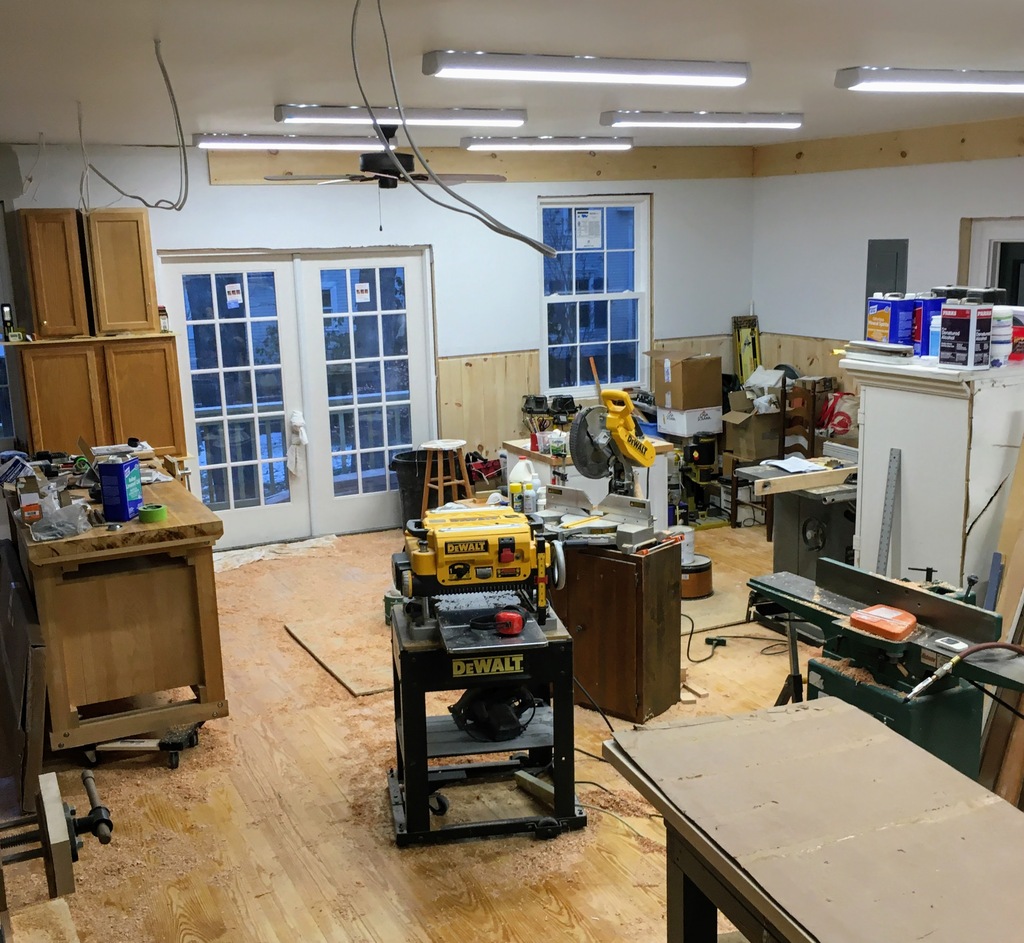
Construction continues to ready the space in time for spring.
Can you tell us about the space? How many people in a class?
The shop itself is small, only 28 x 30 feet, which will make my classes different from other schools. I’m offering an environment that will not be all that different from many basement or small outbuilding shops. That said, what I’m offering is quite special in many ways: The shop is nestled in the Camden Historic District, surrounded by wonderful B & B’s, and only blocks from the bustling and picturesque Camden Harbour. Everything a student would need is within a short walking distance: the village shops, restaurants, bakeries, and delis, antique shops, some beaches, walking paths, an amazing library with magnificent views of the harbor, and much much more. So the location is hard to beat.
The shop is attached to our 1840 restored sea captain’s house and was built to match the period. It is loaded with ambiance: lots of natural light, a wood stove, wood floors, fully stocked with student sets of vintage hand tools and carving tools sets. Each student will have their own dedicated workbench space. I have a full complement of power tools which will be used for some classes. The emphasis is on hand tool techniques, so some classes will be designated as hand-tool only. Even when power tools are utilized, our instructors will demonstrate how techniques can be done by hand, allowing students extensive practice in the hand technique. I’ll also be focusing heavily on carving this first year with master carvers from around the country coming in to teach.
We welcome all skill levels from complete beginners to advanced professionals. The suggested skill level for each class will be clearly marked in the descriptions. Class size will be as small as 5 students in order to maximize one-on-one time with the instructors. So, in sum, our focus is traditional hand-tool techniques, small class size, world-class instruction, and classes for all skill levels. I am very proud of the quality of teachers this first year: it’s a veritable who’s who of world-class makers and carvers. There are in-depth teacher bios on the website.
I am passionate about the traditional arts and my plan in the coming years is to introduce other 18th-century craft classes such as ornamental folk painting, floor cloths, baskets, calligraphy, leather binding, and more. Our goal is to establish a reputation for excellence in Traditional American craftsmanship while ensuring a fun and first-class quality experience for students and teachers alike. My Maine Coast Traditional Arts Workshop website has a ton of info about the classes, instructors, registration info, lodging, the Camden area, info about your host (me), and much more.
My furniture and Bellamy eagle carving work can be seen on my website
I offer tutorials, furniture making projects, and tips on my busy Instagram page.
Here are some supplies and tools we find essential in our everyday work around the shop. We may receive a commission from sales referred by our links; however, we have carefully selected these products for their usefulness and quality.








